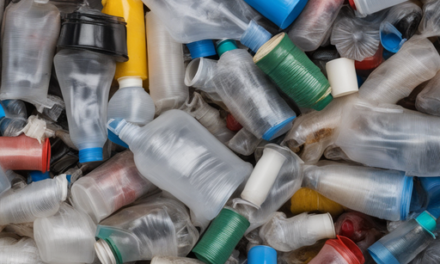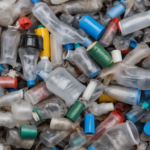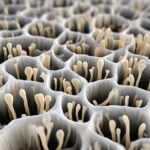The Promise and Peril of Plastic-Eating Fungi Thriving in the Plastisphere
The escalating plastic pollution crisis has led to an unexpected evolution within fungal communities, with the emergence of fungi capable of degrading plastics through novel enzymes. Discovery of these plastic-eating fungi thriving in the “plastisphere” highlights the impressive adaptability of fungi while also opening up eco-friendly possibilities for managing plastic waste through bioremediation. However, the plastic-centered ecosystems created could also harbor risks in the form of pathogenic microbes.
Researchers in recent years have identified various fungal strains, such as Aspergillus tubingensis, Pestalotiopsis microspora, and Fusarium oxysporum, that have developed enzymes to break down plastics, especially polyurethanes and polyesters. The fungal enzymes PETase, MHETase and LPMO-MHETase can fragment the long polymer chains that make up plastics through a process known as biodegradation.
This biochemical evolution has been spurred by the massive scale of plastic waste accumulation, which in turn has spawned whole novel microbial ecosystems thriving on the surface of plastic debris. The “plastisphere” encompasses a wide array of microorganisms that can exchange genes, share resources, and develop symbiotic relationships within plastic-dominated environments in both aquatic and terrestrial settings.
The adaptability of fungi to capitalize on plastics as an abundant new nutrient source demonstrates a form of natural ingenuity and offers an organic solution to managing the millions of tons of plastic waste clogging landfills, beaches, and oceans. By isolating the plastic-degrading enzymes and engineering enhanced fungal strains, there is potential to develop effective bioremediation techniques for dealing with plastic pollution without relying solely on traditional recycling or disposal methods.
However, some risks are posed by the largely unknown microbial communities residing in the plastisphere. Research indicates pathogens like Candida albicans and Aspergillus fumigatus as well as antibiotic resistant strains may find sanctuary on plastics, able to survive and spread more easily through ecosystems. This raises public health concerns about broader exposure and transmission.
Clearly, further research into the complex dynamics and organisms of the plastisphere is required. While plastic-eating fungi present an exciting prospect for biodegradation, all dimensions including possibility of toxic pathogens must be explored before scaling any bioremediation processes. A measured approach assessing both benefits and dangers will enable us to fully leverage the promise of plastic-eating fungi while avoiding unintended consequences.
Sources:
http://www.ecowatch.com/plastic-eating-fungi-china.html
http://phys.org/news/2023-05-plastic-eating-fungi-man-made-plastisphere-tackle.html






